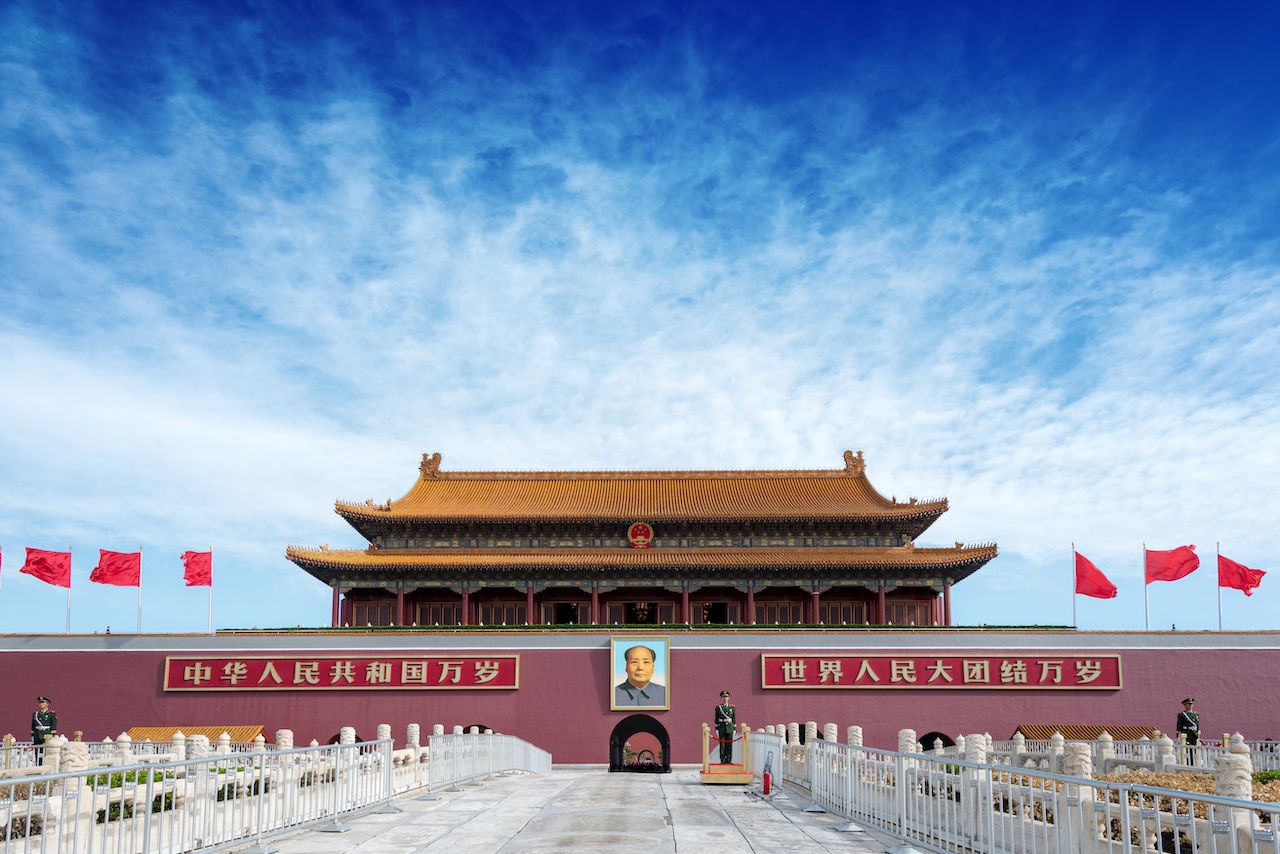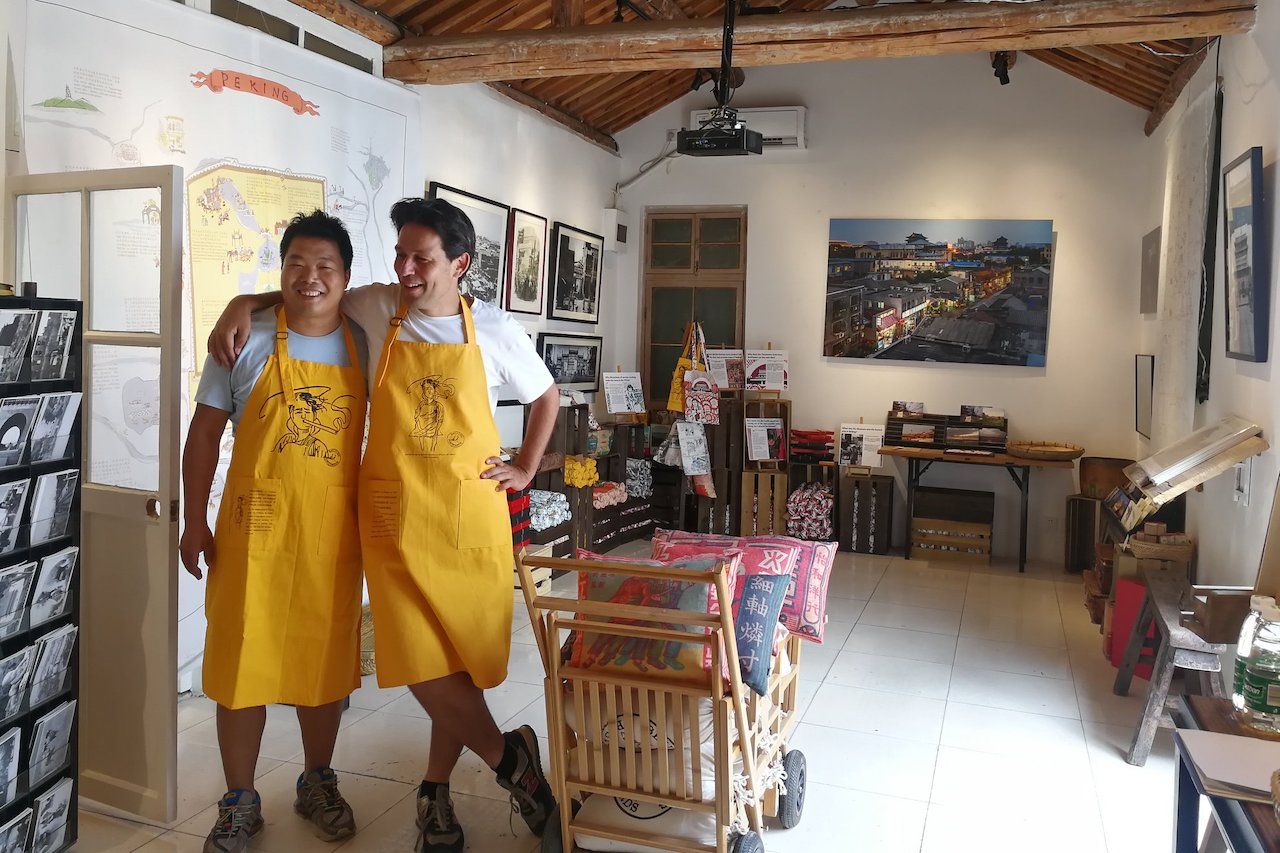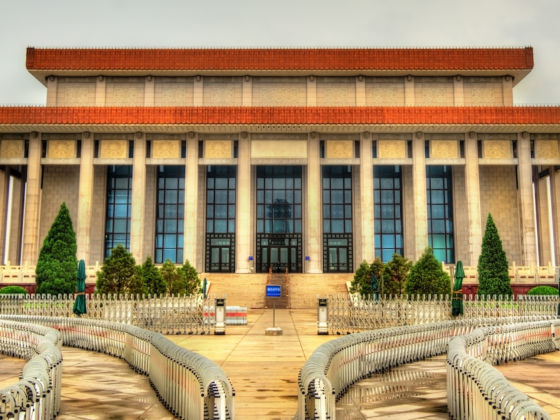If you don’t have too bad of a baijiu hangover from your first day in Beijing, you’re going to want to get an early start on your second day to fit in everything without having to rush. Day two is all about culture and history: visiting the final resting place of a political leader, learning about the city’s development and way of living, checking out an art gallery, and attending the opera. Museum fatigue is real, though, so we’ve included some great spots to eat and recoup your energy.
Tiananmen Square and Chairman Mao Memorial Hall

Photo: Allen.G/Shutterstock
Have a hearty breakfast at the hotel, and then head straight to Chairman Mao’s Memorial Hall, a mausoleum dedicated to Mao Zedong. On the way there, take some time to bask in the vastness of Tiananmen Square. Then snap the requisite photo with the portrait of Chairman Mao staring staidly from over your shoulder, which is hanging outside the walls of the Forbidden City. Reflect on historic events that have happened here, and ponder on what China might be like today if students’ calls for political reform had been heeded.
After the square has made you feel thoroughly small and insignificant, it’s time to wait in line to visit Mao’s embalmed remains. Even waiting in line can be a surreal experience, with other visitors dashing to purchase white carnations, then dashing back to their spot in line. Remember to not wear flip-flops or tank tops, or any other apparel that might be interpreted as impolite to a man many Chinese still revere.
Hutong history

Photo: ynm_yn/Shutterstock
From here, head northwest to the Shijia Hutong Museum, about a 20-minute cab ride or a bit more on a rented bike. This former hutong home, at a sizeable 10,700 square feet, has been converted into a museum that explores Beijing’s development as a capital. The history of the city is intricately tied to the development of courtyard homes and hutong lanes, which in turn have fostered their own unique ecosystems and distinct culture. Signage is thankfully offered in error-free English, rare for Beijing sites of interest.
Lunch, coffee, and history

Photo: Beijing Postcards/Facebook
For lunch, enjoy the chic, modern interior of Soup Kitchen at Jinbao Jie 21. Try the black chicken soup in a coconut shell, and the soy steamed fish.
With a full belly, head back southeast to the historic Dashilar hutong neighborhood. Enjoy one of the city’s best cups of joe at the original location for Soloist Coffee. Beans are roasted in house to bring out a natural sweetness, and as the neon sign by the entrance brags, the coffee isn’t bitter. Meander through the lane (Yangmeizhu Xiejie 杨梅竹斜街), heading west. Be sure to check out the fun little storefront of Boismou. Owned and operated by a 20-something Chinese woman, this eclectic shop features a fun collection of zines, outrageous shoes and apparel, and a good dosage of funk.
Continue on down the street and keep your eyes peeled for “Beijing Postcards.” This small exhibit space collects and interprets photographs, prints, and maps of imperial Beijing (pre-1949, the year that the People’s Republic was founded). The maps are beautiful, fascinating, and accompanied by English explanations. The company also hosts regular talks on-site and walking tours throughout the city.
Dinner and Peking opera

Photo: oceanfishing/Shutterstock
At the eastern entrance of Dashilar is the Suzuki Kitchen restaurant. Modern Japanese fare at reasonable prices with a nonchalantly cool interior means this place is always packed. It’s advisable to make a reservation.
In the evening, brace your ears for some spine-shaking Peking opera. It’s located in the Temple Theatre, a luxe, gorgeously preserved structure from 1667 that was first an ancestral shrine and then a popular playhouse that hosted masters of the art. The Temple Theatre venue is a perfect spot to experience a performance that is admittedly an acquired taste for most.
